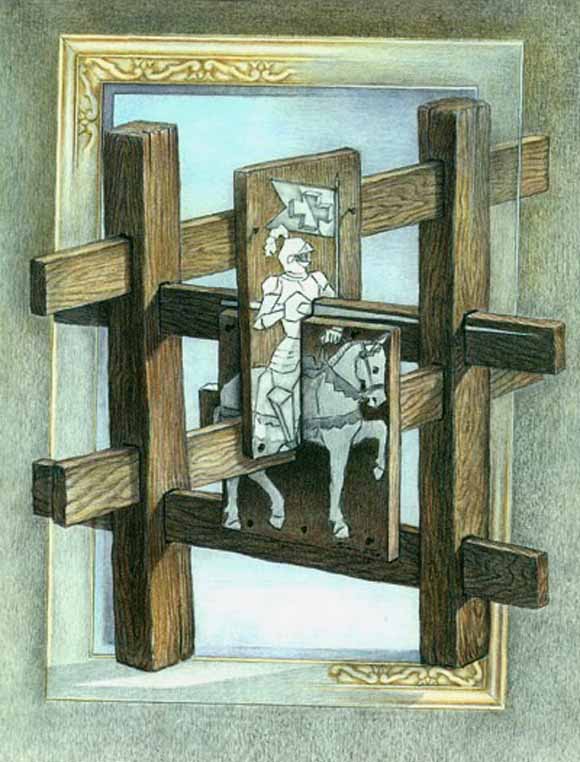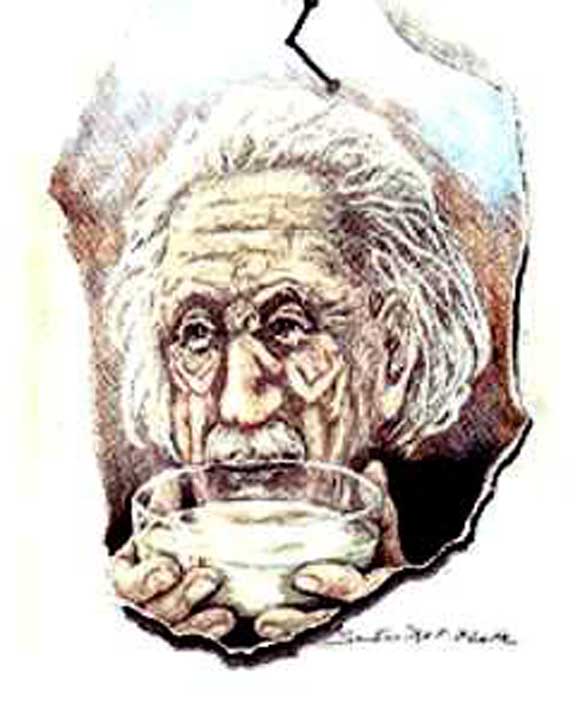Being No One – Neuroscience Disproves the Self?
What does modern neuroscience have to say about our sense of self? Is there really any permanent, essential self to us at all?

The foundational Buddhist theory of pratãtya-samutpàda points out the ways in which our experience of ‘me’ and ‘world’, ‘subject’ and ‘object’, arise, persist then dissipate again, together, in a series of moments. There is no permanent ‘screen’ on which our experience arises. (Kurak 2003) Various impulses and desires come up and, through our acts of selection, attachment and clinging, we conspire to maintain a sense of self which feels permanent and “essential”.
This view of experience is very consistent with recent trends in neuroscience, which suggest that our experience is made up of “a series of discrete microstates” and that “affective structures and systems play critical roles in governing the formation of such states” (Kurak 2003).
In other words, our emotional “system” is instrumental in deciding what we perceive, how we perceive it, and how we then react. For example, if we have traumatic associations with certain situations, say going to school, then we are likely to reinforce the trauma unwittingly by seeing danger signs everywhere, where they do not really exist. This does not mean that one of the qualities we possess is that we are scared of going to school. It is more like a self -reinforcing (sic) process, continuously arising. Scaredness keeps arising in the biological organism, through its interpretation of the world.
This process of interpretation of the world, an integral part of which takes place in/through the emotional system (see the work of Damasio), or through desire, as Buddhists would stress, perpetuating itself through attachment, clinging, or well-trodden neural pathways, is maybe what we call ‘self’.
Thomas Metzinger is a philosopher of mind who, in “Being No One: The Self-Model Theory of Subjectivity” (2003), argues, with some relish, that “no such things as selves exist in the world” (Metzinger 2005, p. 3). While taken by many as a radical, Metzinger stresses that Buddhist philosophy has worked from this starting point for the last 2500 years, and currents in Western philosophy (he cites Hume) have had similar insights.
According to Metzinger, the “self-y feeling” (Metzinger 2009) we all nonetheless carry is caused by a fundamental confusion. He argues that we, as organisms, use representational models on all kinds of biological levels, in order to lead our lives. Metzinger argues that consciousness itself is also a kind of representational model (requiring specific constraints to arise), a model which is invisible and thus confuses itself with reality.
So we are a collection of “phenomenological self representational models”. They are not fixed entities but dynamic processes, constantly interacting with different objects, and simultaneously representing the representational relations themselves. (Metzinger 2005) We ‘are’ these models which cannot turn around and catch themselves in action, and so confuse their contents with “themselves”. This confusion is the self-y feeling. We feel as if we are looking directly at the world, yet we are unable to separate ‘ourselves’ from the representational model that is maintaining our lives as a process of interaction with the world, and in the process producing our selves.
(Editor’s Note: Ironically, the story of the self model understood as a dynamic representational structure and the origin of this sense of ‘self’ was first fleshed out in information theoretic detail in my 1998 book, Mind Out of Matter. Thomas and I enjoyed many debates on the topic earlier in that decade, before my own trajectory led me away from professional philosophy altogether. — Greg Mulhauser)
Our sense of selves is largely produced by the generation of a single context and an experience of the moment. These produce the sense of presence our first person perspective is built on. The self-model’s stroke of genius is the way in which it manages to continuously represent both the level at which the organism maintains and regulates itself in dialogue with the environment, experienced as a kind of undeniable physical “thereness”, and a much higher order set of cognitive processes which simulate possibilities, adding a flavour of “me-ness”.
It is hard to argue with Metzinger when he points out that in time itself there is no such thing as past or future, neither is there such a thing as ‘now’. (Metzinger 2005) It also seems to me, however, that there is no point at which to stand outside time, and point at any ‘part’ of it in order to label it anything at all. Which he might say, is an example of my being caught inside my own model, but I think is a deeper philosophical problem, for another post.
Maybe the salient difference between Metzinger’s profession of no-self and the Buddhist view is that Metzinger sees the development of a first person point of view and a self as a valuable part of evolution, leading human beings forward into culture, whereas the basic Buddhist view regards clinging to the first person point of view as a primary cause of suffering and ignorance (not to mention coming back and going through the whole thing all over again!).
Surely it is possible to live from our human first person perspective, not denying it, and not clinging to its ‘essential nature’ either. Whether we are really models of representational systems, however, I am not so sure… more posts to come in the series on self!
References
Kurak, M. (2003) “The Relevance of the Buddhist Theory of Dependent Co-Origination to Cognitive Science”, Brain and Mind 4: 341–351.
Metzinger, T. (2005) “Precis of Metzinger, T. (2003) Being No One, Cambridge, MA: MIT Press”, Psyche, 11(5).
Metzinger, T. (2009) “Interview with Thomas Metzinger: You are not a self! Bodies, brains and the nature of consciousness”, All In The Mind. ABC Radio National, Australia.










 During TEDxValencia, attendees wrote out ideas and thoughts on Post-it notes,
which were displayed on a wall during the event. Afterward, the notes
were scanned and compiled on an interactive microsite. Learn more from
During TEDxValencia, attendees wrote out ideas and thoughts on Post-it notes,
which were displayed on a wall during the event. Afterward, the notes
were scanned and compiled on an interactive microsite. Learn more from  Dez Propaganda commissioned an 18-minute composition for TEDxValedosVinhedos,
written by Valmor Pedretti Jr., with vocal contribution from Luiza
Caspary. Attendees got a copy of the song on a CD in their gift bags,
and you can
Dez Propaganda commissioned an 18-minute composition for TEDxValedosVinhedos,
written by Valmor Pedretti Jr., with vocal contribution from Luiza
Caspary. Attendees got a copy of the song on a CD in their gift bags,
and you can  At TEDxDelft, sponsor Senz let attendees test their storm umbrellas — designed with one side longer than the other — against a giant wind machine just outside the venue. Result?
At TEDxDelft, sponsor Senz let attendees test their storm umbrellas — designed with one side longer than the other — against a giant wind machine just outside the venue. Result?  The
TEDxAmericanRiviera stage was covered with rectangles of Mylar
stretched across iron tubing. During rehearsal, speakers were given
white pens and asked to write their “idea worth spreading” on the mylar.
The makeshift boards were covered by the end of the day, and gave an
amazing close-up when
The
TEDxAmericanRiviera stage was covered with rectangles of Mylar
stretched across iron tubing. During rehearsal, speakers were given
white pens and asked to write their “idea worth spreading” on the mylar.
The makeshift boards were covered by the end of the day, and gave an
amazing close-up when  On TEDxYouthDay, TEDxYouth@Chisinau held a viewing party for 47 young people at the juvenile prison in Lipcani, Moldova.
At the end, the group was asked to write what “youth” means to them on a
piece of paper, and then to fold a paper plane and fly it through the
air. As youth reporter Alexandru Lebedev writes: “Some of them drew
prison symbols, others wrote the names of social networks that they have
heard about, and some wrote that they want to fall in love, or to love,
or to have a family, or to have a house and a place that could give
them warmth.”
On TEDxYouthDay, TEDxYouth@Chisinau held a viewing party for 47 young people at the juvenile prison in Lipcani, Moldova.
At the end, the group was asked to write what “youth” means to them on a
piece of paper, and then to fold a paper plane and fly it through the
air. As youth reporter Alexandru Lebedev writes: “Some of them drew
prison symbols, others wrote the names of social networks that they have
heard about, and some wrote that they want to fall in love, or to love,
or to have a family, or to have a house and a place that could give
them warmth.” 




